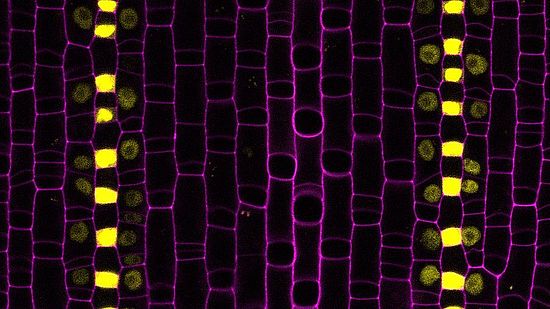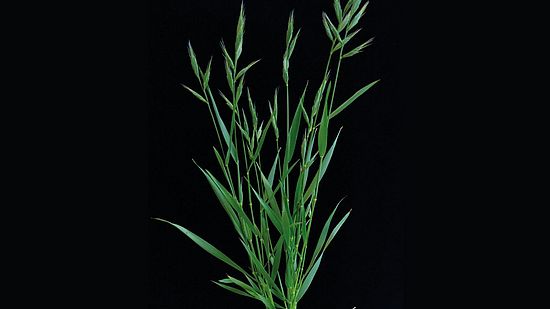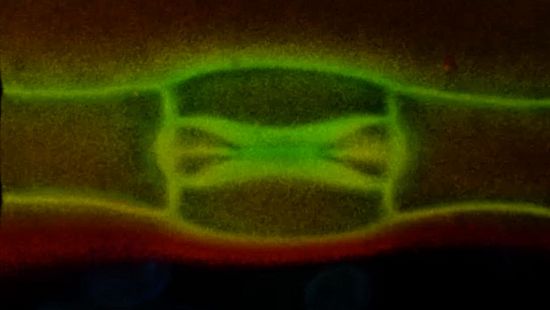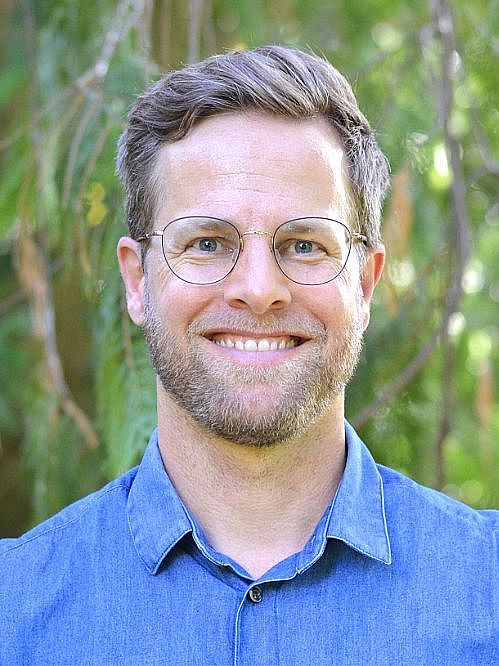Form, development, and function of grass stomata
Plants use sunlight to turn carbon dioxide (CO2) and water into the sugars we eat and the oxygen we breathe. To take up CO2 from the atmosphere land plants form microscopic “breathing” pores on their leaves, which can open and close and are called stomata (Greek for “mouths”). Land plants have evolved different stomatal morphologies to improve gas exchange efficiency. Grasses like the cereals rice, maize, and wheat, for example, recruit two lateral subsidiary cells (or “helper cells”) that flank the central, dumbbell-shaped guard cells. This morphology allows grass stomata to open and close faster and, thus, save water.
Our lab wants to understand (1) how the innovative grass stomata develop, (2) how their innovative form supports fast opening and closing, and (3) if we can engineer stomatal form to improve water use efficiency and stress resilience. To this end, we use CRISPR/Cas9 gene-editing, (time-lapse) confocal microscopy, (single-cell) transcriptomics, and leaf-level gas exchange measurements. We primarily work with the genetic model grass Brachypodium distachyon – a wild relative of wheat and barley –which we can transform efficiently using embryonic tissue culturing.
Recent publications
- Nunes, T. D. G., Slawinska, M. W., Zhang, D., Redt, L., Sibout, R., Vogel, J. P., Jesenofsky, B., Lindner, H., & Raissig, M. T. (2022). A hair cell-specific peroxidase coordinates stomatal and prickle hair cell size to optimize epidermal cell functionality in grasses. In bioRxiv. https://doi.org/10.1101/2022.07.03.498611
- Zhang, D., Abrash, E. B., Nunes, T. D. G., Prados, I. H., Ximena Anleu Gil, M., Jesenofsky, B., Lindner, H., Bergmann, D. C., & Raissig, M. T. (2022). Opposite polarity programs regulate asymmetric subsidiary cell divisions in grasses. In bioRxiv. https://doi.org/10.1101/2022.04.24.489281
- Nunes, T. D. G., Slawinska, M. W., Lindner, H., & Raissig, M. T. (2022). Quantitative effects of environmental variation on stomatal anatomy and gas exchange in a grass model. Quantitative Plant Biology, 3, e6. https://doi.org/10.1017/qpb.2021.19
- Spiegelhalder, R. P. & Raissig, M. T. (2021). Morphology made for movement: formation of diverse stomatal guard cells. Curr Opin Plant Biol 63:102090. https://doi.org/10.1016/j.pbi.2021.102090
- Nunes, T. D. G.*, Zhang, D.*, Raissig, M. T. (2020) Form, development and function of grass stomata. Plant J., 101(4):780-799. https://doi.org/10.1111/tpj.14552
- Raissig, M. T., Matos, J. L., Gil, M. X. A., Kornfeld, A., Bettadapur, A., Abrash, E., Allison, H. R., Badgley, G., Vogel, J. P., Berry, J. A., Bergmann, D. C. (2017). Mobile MUTE specifies subsidiary cells to build physiologically improved grass stomata. Science, 355(6330), 1215–1218. https://doi.org/10.1126/science.aal3254
- Raissig, M. T.*, Abrash, E.*, Bettadapur, A., Vogel, J. P., & Bergmann, D. C. (2016). Grasses use an alternatively wired bHLH transcription factor network to establish stomatal identity. Proc Natl Acad Sci USA, 113(29), 8326-8331. https://doi.org/10.1073/pnas.1606728113
Research topics
- Stomatal development in the model grass Brachipodium distachyon
- Consequences of stomatal form on stomatal function
- Cell identity, cell polarity and cell division during grass epidermal development
- Comparative developmental (Evo-Devo) studies of subsidiary cells
Interdisciplinarity
- (Single-cell) transcriptomics
- Grass biotechnology
- Gas exchange physiology
- Microscopy
- Comparative developmental studies




